How to Get Rid of Period Cramps Fast Home Remedies? Almost all women have been troubled at one time or another by cramps or pain related to their menstrual periods. During the menstrual period, the uterus contracts in order to expel its old lining and replace it with a new one, in preparation for ovulation, the arrival of a new egg and possibly fertilization of the egg, conception and the beginning of pregnancy. These monthly contractions are triggered by prostaglandins, hormone-like chemicals that among other effects initiate inflammation, trigger migraine attacks and cause pain.
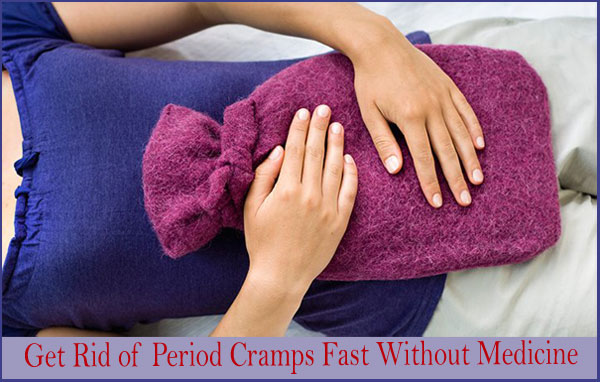
Prostaglandins and hormone changes are also responsible for the other symptoms that accompany menstrual periods, such as fatigue, water retention and bloating, breast tenderness and alterations of mood and emotions. In addition to simply waiting for the symptoms to subside or to diminish and cease after menopause, or the surgical treatments such as hysterectomy that are sometimes needed for severe menstrual problems, several medications are able to reduce the production of prostaglandins or lessen their effects, and play a role in stopping menstrual cramps.
How to Get Rid of Period Cramps Fast Without Medicine:
Table of Contents
Some of these treatments for menstrual cramps require the help of a physician, but there are a number of things that women can do themselves to relieve menstrual cramps.
#01. Medications:
Many of the medicines used for menstrual cramps require a prescription, but some do not. Aspirin, acetaminophen (Tylenol), ibuprofen (Motrin or Advil) and naproxen (Aleve or Naprosyn) decrease inflammation and also inhibit the production of the cramp-triggering prostaglandins. These over-the-counter medications can be taken by themselves or in combination preparations such as Midol, which also contains caffeine for the fatigue and bloating that are also frequent complications of menstrual periods, and an antihistamine for water retention.
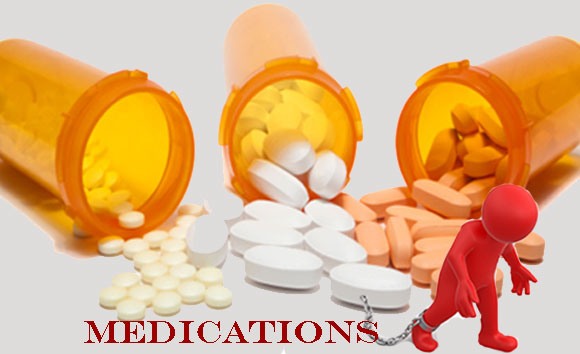
Caffeine in medications may help with some menstrual symptoms, but the stimulant effect of caffeine can make cramps more troublesome, and caffeine can also interfere with nighttime sleep and can cause or worsen pain, breast tenderness and other symptoms. Reducing your daily intake of caffeine-containing beverages may therefore help to lessen cramps.

Some people are allergic to aspirin, and these anti-inflammatory drugs even though sold over the counter can cause significant side effects, ranging from stomach upset to bleeding, particularly if taken in high doses. They should not be taken if there is the possibility of pregnancy, and women under age 20 or who are on prescription drugs should review these with their physicians or gynecologists before trying the anti-inflammatory medications.
#02. Exercise:
With severe cramps it is sometimes hard to move, let alone get exercise, but even moderate physical activity such as walking can lessen cramps and is generally good for health. Exercise increases blood flow to brain and muscles, and leads to the release of endorphins, which are natural pain-relieving chemicals that are part of the reason that you often feel better after exercising.

A sedentary life style contributes to overweight and obesity, and women who are overweight or obese have a much greater likelihood of developing hormonal and menstrual problems, including cramps. Exercise along with diet and other lifestyle factors is important for weight control and weight loss, and is for this reason also helpful in preventing and relieving menstrual cramps.
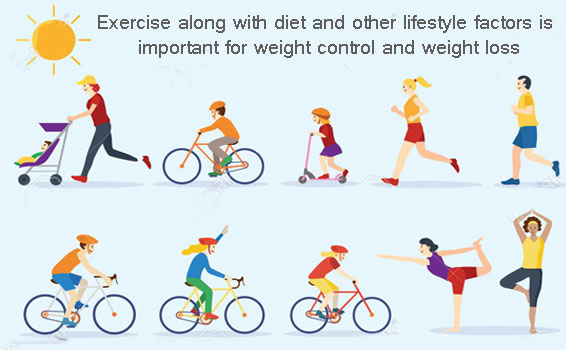
Physical activity at least four times a week is generally beneficial for health as well, and the combination of anti-inflammatory medications and exercise has an additive effect on cramps.
#03. Heat:
Heat reduces pain and relaxes contracting muscles, and both of these effects are useful for menstrual cramps. Some women find that warm pressure on the abdomen or back will help, and pets such as cats are very good at this. A heating pad or electric blanket applied to these areas will also help, although it is important not to fall asleep with a heat source applied to abdomen or back.

There are many forms of over-the-counter heat that can be used, particularly ointments or patches such as BenGay, ThermaCare, Icy Hot or Tiger Balm, but it is important to watch for allergy to these or skin irritation after they are applied.
A hot water bottle on tender places in the abdomen or pelvis will also help, and if you do not have a hot water bottle a convenient heat source can be inexpensively made by filling a sock with uncooked rice or flaxseeds and then heating it in the microwave oven for a minute or two before applying it to a painful area.
Read also: Apple Cider Vinegar Hair Growth.
#04. Nutritionsl Supplements:
Vitamin supplements, particularly vitamin D3, are effective for menstrual cramps, and a high level of vitamin D may help to prevent them in the first place, as well as being helpful for preventing osteoporosis. Vitamin D acts on both pain pathways involved in cramps and the physiology of the uterus during menstrual periods, and is appropriate for all women to take as a supplement.
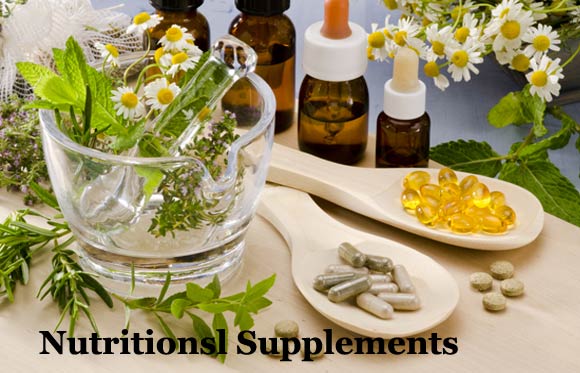
Vitamin B6 (pyridoxine) has been shown to be helpful for both cramps and the other symptoms that accompany menstruation, and there is also evidence that vitamin E supplements are helpful.
Calcium, magnesium and, to a lesser extent, zinc play important roles in the regulation of muscle tone and contraction, and pain is a frequent feature of their deficiency. Calcium is particularly important, and a daily intake of 800 mg, which is equivalent to about 3 cups of milk, has been recommended for bone health as well as prevention of menstrual problems.
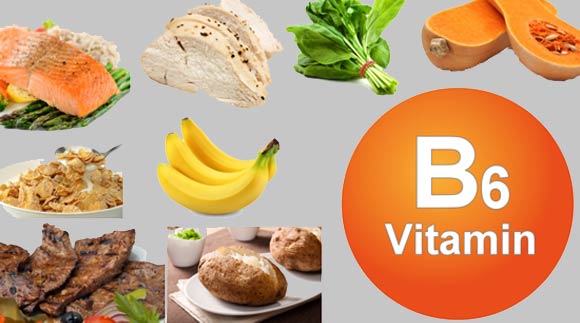
Magnesium helps to regulate the excitability of nerves and muscles, and also helps with the absorption of calcium. Magnesium supplements will sometimes cause stomach upset or diarrhea, so other sources of magnesium such as vegetables, nuts, salmon and shellfish, beans and soy protein could be tried. Zinc may act by enhancing blood flow to the uterus, reducing inflammation and influencing the production of estrogen by the ovaries, which plays an important role in the menstrual cycle. Stomach upset is the main problem to watch for if taking daily zinc supplements.
#05. Herbal Medicines:
Herbal remedies have long been used for pain, menstrual and otherwise, particularly in Eastern healing traditions such as Traditional Chinese Medicine and Ayurveda. Native American herbalists also discovered effective remedies, and until recently Western medicine was also often friendly to herbal medicines as well as prescription drugs. Herbal remedies are derived from the leaves and sometimes the stems of plants, and are often sold in dried or powdered form. They can be taken as teas, made by steeping the herb in hot water for several minutes.
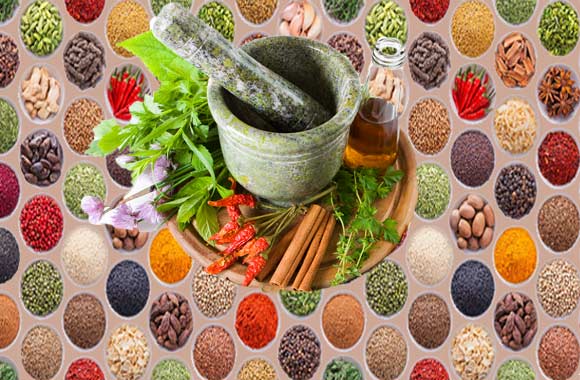
Another way to take them is as an infusion, which is like a tea but involves steeping the herb for up to minutes, and is usually used from remedies made from the harder parts of plants. Still firmer plant material can be made into decoctions by steeping them in hot water for up to 30 minutes. These can be sweetened to taste, and in some cases herbal teas are available in bags just like green or black tea.
It is also possible to buy tablets or, more commonly, capsules containing ground herbs. The Cochrane Collaborative, an international organization that reviews scientific evidence of the effectiveness of various medical treatments, has concluded that several Chinese medical herbs were more effective than anti-inflammatory drugs, the application of heat, acupuncture or the prescription of birth control pills for the relief of menstrual cramps.

A commonly used Chinese herb, Dong quai, relaxes the smooth muscle of the uterus and is effective for breast tenderness as well as cramps.
Western herbs such as Passionflower, Vitexor chasteberry and Crampbark, which got its name from its use for menstrual discomforts, have also been found to be effective. Chamomile tea contains several compounds that antagonize the effects of prostaglandins and reduce inflammation, and is also relaxing and facilitates sleep.
Essential oils have been around since the days of Cleopatra, and are not usually oily but achieve much of their effect by stimulating the nervous system through the sense of smell. These are the residuals of plant oils and essences, and can be bought in concentrated form in many pharmacies and most natural products stores.
Some essential oils are irritating to the skin and others can cause sensitization to the sun, so only a drop or two should be directly applied; they are usually combined with a neutral carrier such as vegetable, olive or flaxseed oil and used for a massage, or are added to a bath. They should never be taken internally, and women with asthma, cancer, epilepsy or high blood pressure should get medical advice before using them.
Black pepper and rosemary are warming and relax cramped abdominal muscles, and geranium and rose oils have long been used for menstrual discomfort. Lavender, bergamot or jasmine alleviate stress and tension as well as cramps. Sex drive is often reduced by menses, and this has traditionally been improved by patchouli and ylangylang.
Another widely-available form of aromatherapy involves essences extracted from flowers. The best-known flower essences were developed by Dr. Edward Bach after the First World War, and are derived from 37 common English flowers; the combination of five of these essences known as Rescue Remedy is one of the world’s best-selling holistic medicines. Up to 10 drops of the essence on the tongue or in a glass of water are recommended, and Heather, Olive, Scleranthus, Impatients and Cherry Plum are helpful for cramps and other menstrual problems.
#06. Acupuncture, Acupressure and Reflexology:
Acupuncture is derived from traditional Chinese medicine, and uses needles inserted at certain points along the meridians that Chinese medicine teaches conduct the body’s vital energy or qi. Inserting and turning the needles, possibly with the additional application of a small electric current, fine tunes the flow and distribution of the body’s energy like tuning a piano. Read Also: How to Get Rid of Gas And Bloating Fast Naturally
Western science suggests that acupuncture can stimulate the release of pain-relieving endorphins and inhibit nerve cells in the spinal cord that are involved in the transmission of pain. Acupuncture may be as effective as pain medications for menstrual cramps and has fewer side effects. It requires the services of an acupuncturist, however.
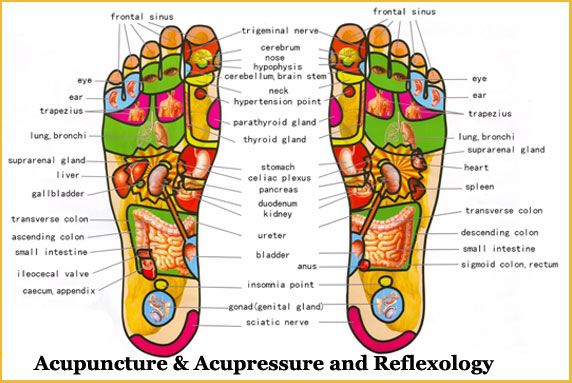
A relative of acupuncture that can be done by women at home is acupressure, in which crucial points in the energy pathways are worked or massaged. Charts are widely available showing many of these traditional points, and Conception Vessel 4 and 6, as well as Bladder 25, 31 and 40 can be compressed and rotated with the thumb and tapped with the index finger for 5 to 30 seconds at a time, each treatment usually repeated five times.
A related form of bodywork is reflexology, which is based on the premise that the internal organs can be influenced by gentle pressure on reflex points on the foot. Charts showing these points are readily available, and women can do similar massage themselves for menstrual cramps. nese medicine, redirects the flow of the body’s vital energy to areas that are causing problems, and has been shown to be effective for menstrual pain.
Homeopathy, which teaches that symptoms can be relieved by very small doses of substances which at full strength cause those same symptoms, offers several safe over-the-counter options, including Chamomile, Cimcifuga, Pulsatilla and Sepia. These widely-available and generally inexpensive remedies may also help with the emotional and mood changes that can accompany menstrual periods.
#07. Homeopathy:
Homeopathy teaches that “like cures like”, and holds that symptoms are best managed with very small doses of substances that at full strength will cause the symptoms being treated. Homeopathic remedies are made from common plants and minerals and occasionally from animal sources, and are repeatedly diluted to minimize side effects; they are available over the counter and are generally inexpensive. Hundreds of remedies have been made over the years, traditionally named in Latin for the original source of the remedy.
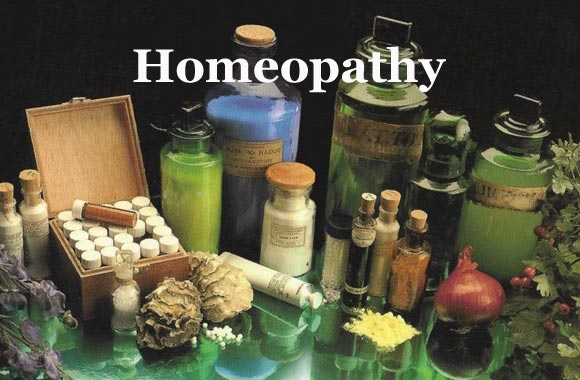
Chamomilla, which is made from the chamomile flowers used in teas, and Cimcifuga, which is made from black cohosh, are common preparations for menstrual cramps. Pulsatilla, which is the pasqueflower or prairie crocus, and Sepia, made by the dilution of squid ink, have long been used as menstrual remedies.
#08. Orgasm:
Last but certainly not least, this may be the ultimate in medical self-help. The uterus relaxes before an orgasm, and blood flow in increased as with exercise. Most effectively, there is a surge of endorphins that lessen pain generally and commonly facilitate sleep, which is also helpful for pain relief.
The use of some of the home and over-the-counter treatments mentioned above may help women feel able to try this very effective natural remedy.
Last Updated on February 3, 2018 by Marie Johnson

